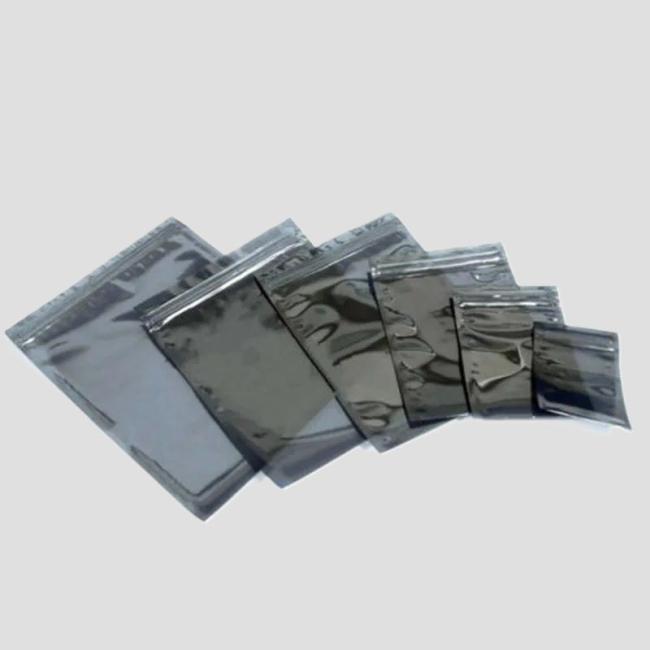
What is the material of anti-static bag?
Anti-static bag is widely used in the field of electronic product packaging as an effective solution. It can effectively avoid the damage caused by electrostatic discharge to the internal items.
The main material composition of anti-static bag and its features are:
- Polyethylene (PE) + antistatic agent
- Description: This is one of the most basic and common types of anti-static bags. The purpose of reducing the surface resistivity is achieved by adding a certain percentage of antistatic agent to ordinary polyethylene.
- Features:
- Low cost;
- Simple production process;
- Suitable for general antistatic needs.
- Limitations: The anti-static effect will gradually weaken with time, especially in the environment with low humidity.
- Metallized film
- Description: A plastic substrate such as PET or OPP is used and a thin metal layer (e.g. aluminum) is vapor-deposited on its surface to form a composite material with shielding effect.
- Features:
- Excellent electromagnetic wave shielding performance;
- Can provide long-term stable anti-static protection;
- Certain ability to prevent water vapor transmission.
- Application: Suitable for applications with high static protection requirements, such as precision instruments and high-end electronic products.
- Conductive Polymers
- Description: Conductive fillers (e.g., carbon black, metal powder, etc.) are uniformly dispersed into the resin using a special process to make a thin film material.
- Features:
- Low and stable surface resistivity;
- High resistance to abrasion;
- Recyclable.
- Application Scenario: Especially suitable for applications requiring long time storage or multiple reuse.
